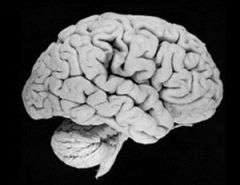Getting wired: How the brain does it

In a new study, researchers at the Montreal Neurological Institute and Hospital (The Neuro), McGill University have found an important mechanism involved in setting up the vast communications network of connections in the brain.
A signaling pathway involving interactions between a schizophrenia-linked gene product, Calcineurin, and a transcription factor known as Nuclear Factor in Activated T-cells (NFAT) contributes to the connectivity at nerve cell (neuron) junctions or synapses and affects the extent of nerve cell projections or dendritic branches, in the visual system. The results of this study, published in the journal Neuron, may bring hope to adults suffering from brain injuries and offer the possibility of early diagnosis, treatments and therapies for schizophrenia, autism or other developmental disorders where abnormal neurological wiring is thought to occur early in life.
In early brain development, there is an overabundance of unspecified connections between neurons. During development (and learning), these connections are pruned, leaving the stronger and more specific ones. This refinement occurs in response to a set of inputs from the environment, and is traditionally thought to be mediated through changes at synapses - the specialized junctions through which neurons communicate with each other.
Neurons possess an innate tendency to extend branched projections from the cell body known as dendrites. Dendrites receive information and form synaptic contacts with the terminals of other nerve cells to allow nerve impulses to be transmitted. In the so-called "synaptotropic model" of dendritic development, interactions between dendrites and potential synaptic partners provide the extrinsic cues that help direct dendritic growth into patterns that optimize synaptic interactions. Therefore, growth or branching is most likely to occur in regions where there is a stabilized synapse and retraction is more likely in regions where synapses fail to mature or become destabilized.
"Our study shows that changes in synaptic connections are also controlled by alterations in the transcriptional profile of the cell which governs protein production," says Dr. Edward Ruthazer, neuroscientist at The Neuro and lead investigator of the study. There is a growing body of evidence that transcriptional regulation, an important step in the process of making proteins, is a key regulator of long-term changes in synaptic connectivity.
The protein Calcineurin (CaN) regulates transcriptional programs that control synapse formation and function. It has also has been strongly implicated in weakening connections between cells, and is a likely regulator of pruning of connectivity. CaN instructs the neurons through the transcription factor NFAT, which in turn plays an important role in axonal outgrowth and neuronal response to extrinsic cues involved in circuit development and refinement.
Neil Schwartz, a graduate student in Dr. Ruthazer's lab designed a method of specifically blocking the interaction between CaN and NFAT at the nucleus in order to examine the effects on neuronal connections in the visual system. "We found that inhibiting the function of CaN resulted in more dendritic branches and more synapses, demonstrating that CaN is a potent regulator of dendritic complexity and synaptic function," explained Dr. Ruthazer. "We further demonstrated that CaN mediates its effects on neurocircuitry through its activation of NFAT transcription factors and that NFAT activity in the developing brain can be regulated by natural visual stimulation.
This extension of the synaptotrophic model taking into consideration not only the interactions with synaptic partners that shape the neural architecture, but also the transcriptional profile of nerve cells, provides vital insight into diseases in which there is abnormal neural connectivity and offers the possibility of early diagnosis and treatment.
Source: McGill University (news : web)

















